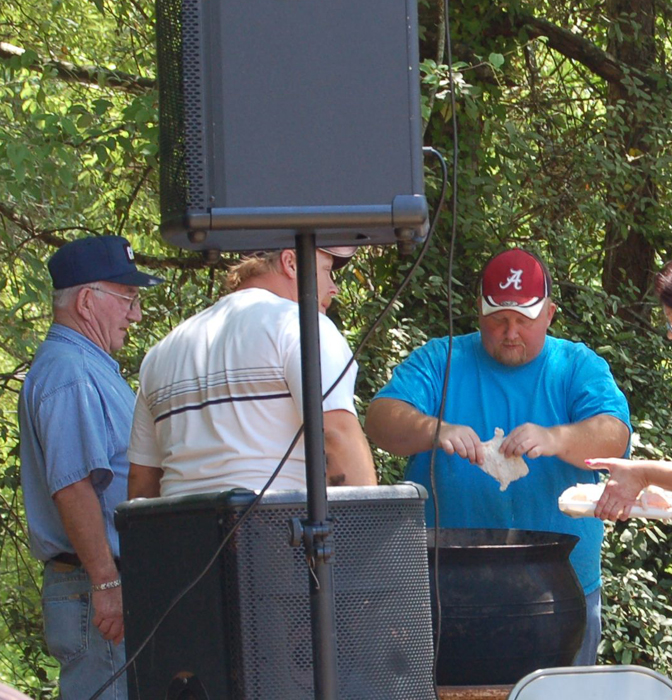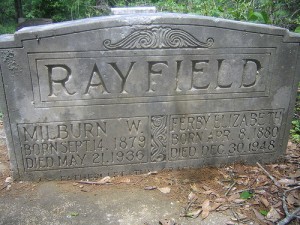I was reading the article in the NYTimes today, On Lenten Fridays in New Orleans, the Catfish Are Making the Sacrifices and it made me think of the fish fries in Alabama I’ve been to and how food can symbolize a place and a time and often a tradition that runs deep in your family.
The first time I visited my father’s family in Talladega, Alabama in 1982, the trip ended with a big fish fry at my uncle’s gas station/store. The whole family was there–and when I say that about this family, I easily mean 50 people or more. The deep fryers were outside and catfish that various uncles and cousins caught were being fried alongside hush puppies. Inside were platters of cole slaw, potato salad and big styrofoam cups of icey sweet tea. One of the rooms in the back of the store had been set-up with amps, a drum kit, microphones; folks showed up with guitars, ready to sing. The music was decidedly gospel and it was the first time I heard my grandmother sing “I’ll Fly Away” in her distinctive alto voice. I grew up just outside Boston, I’d never experienced anything like this. Once back home, fried catfish, hushpuppies and even a can of Dr. Pepper brought a little bit of Alabama.

In subsequent trips, I’ve been to different fish fries. We drove out on a hot day, to a church in rural Clay County to hear my aunts and cousin at a Gospel Singing. Off behind the speakers, men were frying mud cat that the preacher had caught that week in a big old iron pot over an open flame. It tasted more earthy than any catfish I’d ever had. It came with the requisite hush puppies, slaw and sweet tea which we ate, listening to gospel and trying to stay out of the really hot sun.
There have been other fish fries at my grandmother’s church and there’s always music. There have also been backyard meals filled with mac & cheese, butter beans, mustard and collard greens, fried and regular corn bread, bbq chicken, fried green tomatoes, okra, biscuits, black eyed peas, and red velvet, 7-up, and coca cola cakes. And huge styrofoam or plastic cups of ice for soda or sweet tea.
I suppose this is similar to what I was talking about in the post The History You Can Touch. Once in Alabama, I sat with my dad and his cousin while they ate fried and boiled chitlins, they reminisced over a time when your house would be filled with the horrible smell of chitlins being cleaned and cooked. A time when you ate chitlins because you wouldn’t waste one bit of the pig; so history pops up around the supper table just like it does in the cemetery or in the library.
Food connects me to my family, their culture, traditions and history–at rural Alabama fish fries, but also at Armenian Church dinners in East Watertown, MA and the Pennsylvania German farmer’s markets in York, PA. Which means I’ll be writing soon enough about lamejun, kufte, metch and then hog maw, german bologna and big tins of Utz potato chips and pretzels!
